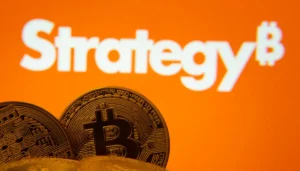Taproot is one of the most anticipated technological upgrades to Bitcoin blockchain since the introduction of SegWit in 2017. The Taproot will be a soft fork that will improve Bitcoin’s scripts to increase privacy and improve upon other factors related to complex transactions.
The way Bitcoin blockchain works in the background has evolved many times since Bitcoin was invented in 2008. The history of the first blockchain is rich with soft and hard forks. A soft fork involves the modification of an existing blockchain. Whereas a hark fork creates a new blockchain altogether.
The first major hard fork of Bitcoin blockchain was Bitcoin XT that happened in 2014. Bitcoin XT aimed to increase the network transaction speed by increasing the block size from 1MB to 8 MB.
While the original blockchain has the capacity of executing 7 TPS, Bitcoin XT was proposed to perform up to 24 transactions per second. The hard vanished from the scene after some initial transaction.
Bitcoin XT was followed by Bitcoin Classic in 2016 that proposed a smaller block size of 2MB in comparison to the 8MB of Bitcoin XT. The protocol is still in existence, but without any significant adoption.
Segregated Witness (SegWit) was the first proposed soft fork of Bitcoin in 2017 that revolved around making Bitcoin scalable and reducing transaction fees through the separation of transactions on the Bitcoin network from the actual data.
But this soft led to another hard fork, Bitcoin Cash. It is the most successful fork of Bitcoin as its native BCH coin was once the fourth largest crypto asset by market cap. This was followed by Bitcoin Gold.
The protocol still exists but has been criticized as it has suffered repeated DDOS attacks, and even the infamous 51% attack in 2018. Bitcoin Cash then itself was hard forked in 2018 by self-claimed Satoshi Nakamoto to create Bitcoin SV.
Taproot is another soft fork proposed for Bitcoin. Let’s take a detailed look at this Bitcoin update.
What is Taproot?
Taproot is a soft fork proposed for Bitcoin blockchain to improve Bitcoin’s scripts to increase privacy and improve upon other factors related to complex transactions. Taproot was first proposed in 2018 by Gregory Maxwell, a Bitcoin Core (BTC) contributor, and former chief technology officer at Blockstream.
The upgrade, that will implement the Schnorr signature scheme into Bitcoin code, seeks to enhance the overall usability of the network by making transactions cheaper, faster, and easier to deploy but also eventually allow for the deployment of smart contracts, and improved privacy.
It will also make transactions on the Lightning Network cheaper, more flexible, and more private. Furthermore, Taproot makes future Bitcoin upgrades easier by reforming Bitcoin’s scripting language.
Making any amendments to Bitcoin is hard as there is no one in charge and achieving consensus among such a diverse and dispersed group of participants is a challenge. In March, a proposal called Speedy Trial was passed to see if miners are ready for activation of Taproot.
Per the activation rules set by Speedy Trial, 90% of blocks mined within one of Bitcoin’s difficulty periods need to signal support for the upgrade.
The compromise allots a three-month activation window, during which time the network requires a certain threshold of miners to signal for the upgrade. The 90% threshold has to be reached within one of the roughly two-week-long or 2016 block difficulty periods before the three-month activation window ends on August 11 this year.
If reached, Taproot will be locked in for activation in November. Until now, no signaling period has achieved this threshold. Remember, if the threshold is not met, Speedy Trial will be a waste of time as Taproot will be not implemented.
How does the Taproot update work?
The main goal of the Bitcoin Taproot update to change the way Bitcoin’s scripts operate to improve privacy, scalability, and security. This will be accomplished by combining Taproot with a related upgrade called Schnorr signatures.
Bitcoin’s scripting language may seem simple but it offers an amount of functionality. Transactions on the Bitcoin network can use various features that make them more complex, including timelock releases, multi-signature requirements, and others.
Currently, making smart contracts like complex transactions requires posting the entire script inside of each transaction input when spending funds.
When said coins are spent, those scripts become public on the Bitcoin blockchain. But complex contracts take up a lot of blockchain space, so they were expensive to execute. As these scripts become public, they also expose some details about the people involved in the transaction.
With Taproot, complex transactions can be made look like standard single, person-to-person transactions as the said upgrade will hide all the moving parts of a complex Bitcoin transaction, like timelock releases or multi-signature. This will be done by combining involved parties’ public keys to create a new public key and combining their signatures to create a new signature.
Schnorr signature will make this possible.
Schnorr Signature
Schnorr signature, developed by Claus Schnorr in 1980, is an algorithm to produce digital signatures in cryptography. This signature algorithm is known for its simplicity and efficiency in generating short signatures.
Satoshi Nakamoto adopted the Elliptic Curve Digital Signature Algorithm (ECDSA) scheme when developing the Bitcoin blockchain. The Taproot soft fork will implement the Schnorr signature algorithm that will make multi-signature transactions cheaper and more data-efficient while giving a privacy boost by making them look the same as regular transactions on the blockchain.
Schnorr algorithm will take multiple keys inside a complex Bitcoin transaction and produce a single unique signature. This means that signatures from the multiple parties involved in the transaction can be aggregated into a single Schnorr signature, the process known as signature aggregation. This will not be done by the Schnorr algorithm alone but in a combination of Schnorr signature and Merkelized Abstract Syntax Trees, or MAST.
Furthermore, Schnorr signatures provide more security as they are non-malleable which will help to address the double-spend problem of Bitcoin. In ECDSA, a third party can access the private key to alter an existing valid signature. This attack makes it appear as if the transaction never happened, resulting in double-spending of funds.
What Benefits does Taproot Bring to Bitcoin?
Lower Transaction Fees
With Taproot, the amount of data to make complex transactions will be dramatically reduced. This means transaction fee costs for using more complex Bitcoin wallet features, such as multi-sig or time-locking, will decrease significantly.
It will impact the largest cryptocurrency by market cap positively as transaction fees for Bitcoin is at historic highs due to increased popularity.
This is all achieved through the reduction of data bytes used to make keys and signatures. Public keys used for Schnorr signatures are 32 bytes long, compared to ECDSA’s 33-byte public keys. Schnorr signatures are 65 bytes long, compared to ECDSA signatures, which range from 71-72 bytes. These small savings of data bytes will help Bitcoin a lot.
More Functionality
Developers can work on creating vaulting logic that is better protected against permanent loss by having multiple time-locked redemption conditions.
According to some sources, Taproot will also enable batched validation, with which a Bitcoin full node could validate 1,000 Taproot signatures in nearly the same time it takes to validate one ECDSA signature.
Furthermore, Taproot will introduce ring signatures to give users the ability to prove they own certain coins without having to reveal the public key associated with those coins.
More Privacy
Taproot will enhance the privacy of transactions as with the combination of Taproot, Schnorr signatures, and Merkelized Abstract Syntax Trees (MAST), Bitcoin wallets with more complex spending conditions, like a multi-sig wallet or one that uses time-locking, will no longer be distinguishable from simple single signature wallets.
Schnorr-based transactions are more private because all Taproot transactions have the same digital footprint, thanks to so-called scriptless scripts. This will make a single signature transaction and a multi-sig transaction look the same on the blockchain. The privacy benefit will also extend to other Bitcoin-related applications like CoinSwap and Lightning Network.
The Taproot update will improve the privacy of the Lightning Network by modifying how Lightning Network nodes “route” transactions.
Conclusion
Taproot is a proposed upgrade to Bitcoin which will bring several new features and benefits to Bitcoin users. The main thing is that Taproot will integrate the Schnorr digital signature scheme into Bitcoin, upgrading Bitcoin’s core cryptography that will improve Bitcoin’s privacy and lower transaction fees. It is also said that Taproot will make future Bitcoin upgrades easier by updating Bitcoin’s scripting language called Tapscript. Furthermore, Taproot also integrates Merkelized Alternative Script Trees (MAST), which allow users to lock outputs to multiple scripts.
The Taproot activation on the Bitcoin blockchain still has a long way to go. Per the Speedy Trails rules, 90% of miners have to signal support for Taproot in any of the six Bitcoin mining difficulty periods until August 11, 2021.
According to Taproot Watch, during the current signaling period of 2016 blocks, 880 or 44.15% of blocks have signaled support and 23 blocks have not. 1103 or 54.85% are still to be mined in the ongoing difficulty period.
This means that 925 or 45.85% more blocks are required to meet the threshold. If met in the current or any signaling period until August 11, Taproot will be locked in for activation in November.
If you found this article interesting, here you can find more Bitcoin news













